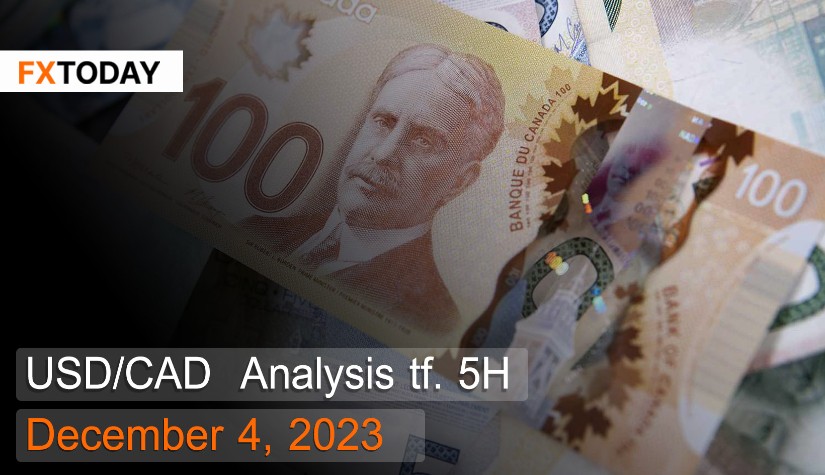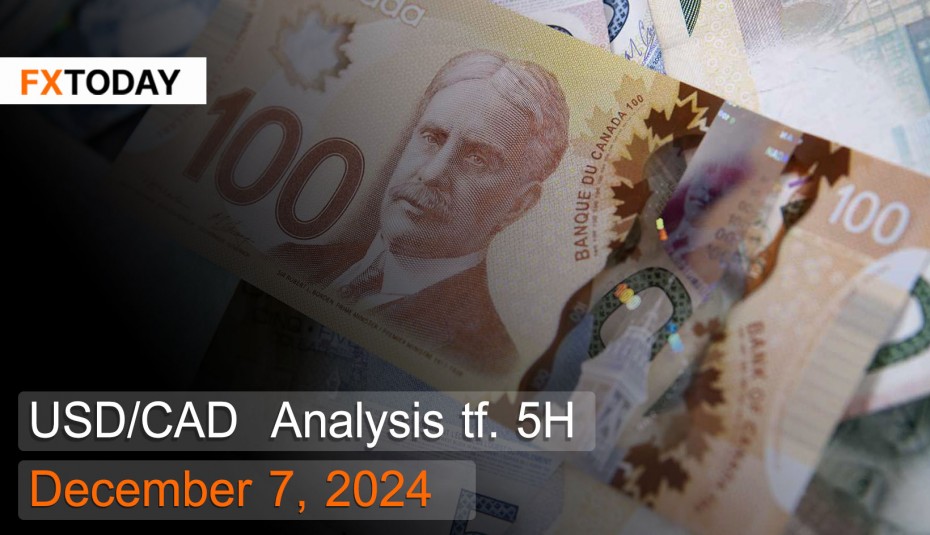GDP of Canada has turned negative again.
The Canadian dollar has shown continuous strengthening over the past week and weakened to around 1.35 Canadian dollars per US dollar today. Investors remain concerned about the declining oil supply as OPEC has decided to further cut daily production by an additional million barrels, which could positively impact Canada's exports and support an economy that may be slowing down in the future, as evidenced by Canada's shrinking GDP.
Canada's GDP contracted by 0.3% in the third quarter, marking the first decline since the second quarter of 2021. The rising interest rates have begun to impact Canada's economy at a higher level. Additionally, Canada faced pressure due to a decline of 1.3% in exports of goods and services, primarily driven by a 25.4% drop in petroleum refining, while imports decreased by only 0.2%. Household spending also saw a reduction during this period.
The unemployment rate in Canada increased to 5.8% in November, in line with market expectations, marking the highest rate since 2022. The number of unemployed individuals rose by 11,000 to 1.24 million, while employment increased by 24,900 to 20.31 million. Notably, the youth population (aged 15-24) saw a significant increase in unemployment at 11.6%.
Despite increases in unemployment across several sectors, minimum wage and average monthly incomes saw slight growth. Moreover, data suggests a substantial increase in full-time employment, indicating that Canada's economy might not be as bleak as anticipated.
The Manufacturing Purchasing Managers' Index (PMI) rose to 47.7 in November but still remained in the contracting zone. Both production output and new orders saw reductions. Additionally, the fastest decline in sales was recorded since August 2022 due to reduced demand from economic uncertainties. However, there was a slight increase in hiring, driven by growth forecasts and increased future positive sentiments.
The yield on Canadian 10-year government bonds dropped below 3.5%, reaching a two-month low due to economic slowdown signals. Investors expect the Bank of Canada to ease monetary policies sooner. However, Jerome Powell, Chair of the U.S. Federal Reserve, has not discussed an immediate interest rate cut.
Techical analysis data (5H)
Resistance: 1.3553, 1.3568, 1.3586
Support: 1.3519, 1.3500, 1.3486
Source: Investing.com
| Name | S3 | S2 | S1 | Pivot Points | R1 | R2 | R3 |
| Classic | 1.3486 | 1.3500 | 1.3519 | 1.3534 | 1.3553 | 1.3568 | 1.3586 |
| Fibonacci | 1.3500 | 1.3513 | 1.3521 | 1.3534 | 1.3547 | 1.3555 | 1.3568 |
| Camarilla | 1.3530 | 1.3533 | 1.3536 | 1.3534 | 1.3542 | 1.3545 | 1.3548 |
| Woodie's | 1.3488 | 1.3501 | 1.3521 | 1.3535 | 1.3555 | 1.3569 | 1.3588 |
| DeMark's | - | - | 1.3527 | 1.3538 | 1.3560 | - | - |
Buy/Long 1: If the price touches support in the price range of 1.3500 - 1.3519 but cannot break the support at 1.3519, you may set a TP at approximately 1.3568 and SL at around 1.3486 or according to your acceptable risk.
Buy/Long 2: If the price breaks the resistance in the price range of 1.3553 - 1.3568, you may set a TP at approximately 1.3586 and SL at around 1.3500 or according to your acceptable risk.
Sell/Short 1: If the price touches resistance in the price range of 1.3553 - 1.3568 but cannot break the resistance at 1.3553, you may set a TP at approximately 1.3500 and SL at around 1.3586 or according to your acceptable risk.
Sell/Short 2: If the price breaks the support in the price range of 1.3500 - 1.3519, you may set a TP at approximately 1.3486 and SL at around 1.3568 or according to your acceptable risk.
| Name | Value | Action |
| RSI(14) | 40.675 | Sell |
| STOCH(9,6) | 26.573 | Sell |
| STOCHRSI(14) | 71.656 | Buy |
| MACD(12,26) | -0.003 | Sell |
| ADX(14) | 25.794 | Buy |
| Williams %R | -66.667 | Sell |
| CCI(14) | -26.8568 | Neutral |
| ATR(14) | 0.0035 | Less Volatility |
| Highs/Lows(14) | -0.0000 | Sell |
| Ultimate Oscillator | 35.240 | Sell |
| ROC | -0.405 | Sell |
| Bull/Bear Power(13) | 0.0002 | Buy |
|
Buy:3 Sell:7 Neutral:1 Summary:Strong Sell |
||
















